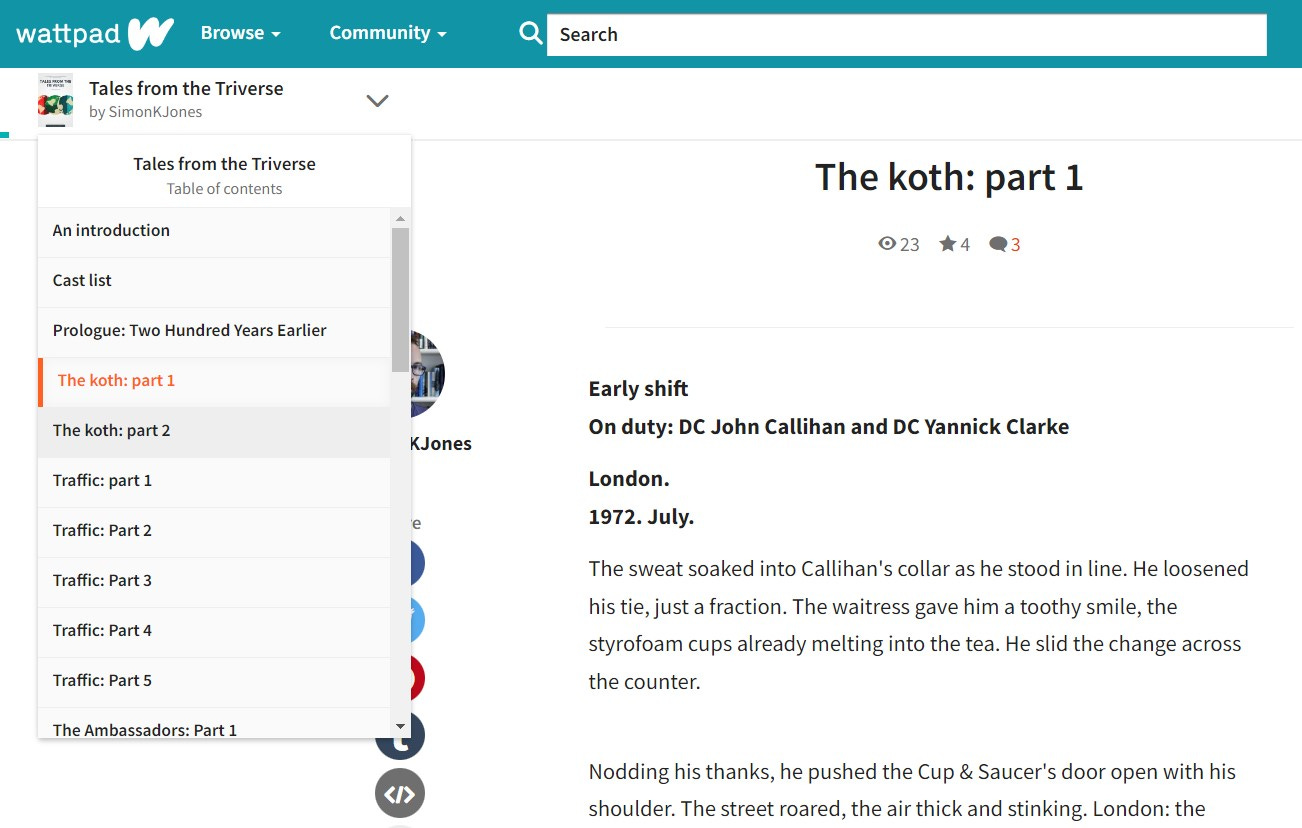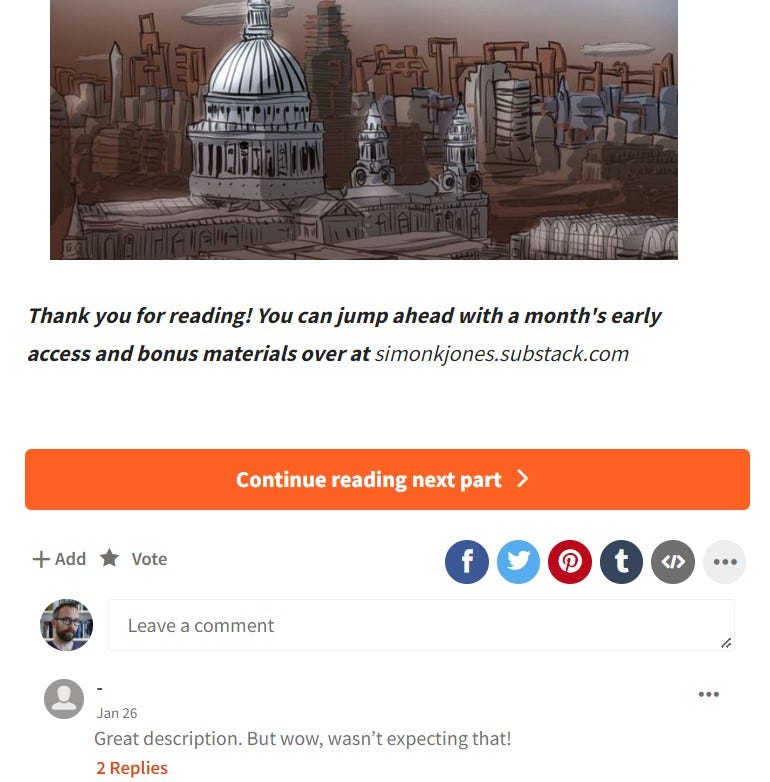Structuring serial fiction on Substack
Helping your readers navigate the story
Something of a nuts-and-bolts newsletter today. I’m still in the tail end of recovering from having covid last week, with my brain feeling like it’s only operating at half speed. Hopefully what follows a) makes sense and b) is useful.
I published for many years more-or-less exclusively on Wattpad, which is a platform specifically designed for writing and reading serialised fiction. This has a number of built-in benefits. Here’s the reading view on desktop, where you can see a useful index menu that makes it easy to jump to any chapter in the book:
Readers are also guided when they reach the end of a chapter, immediately able to jump into the next chapter without any faffing about:
Substack, being a much more general newsletter platform, does not currently have this kind of functionality built-in. After all, a Substack newsletter can be all sorts of things, not all of them requiring sequential linking of multiple parts.
It is possible to replicate a similar approach, which for writers of serialised fiction (or non-fiction) is vital if you want to avoid frustrating your readers. I’m still working out much of this, but I thought I’d run through my standard chapter layout in case it’s of use.





